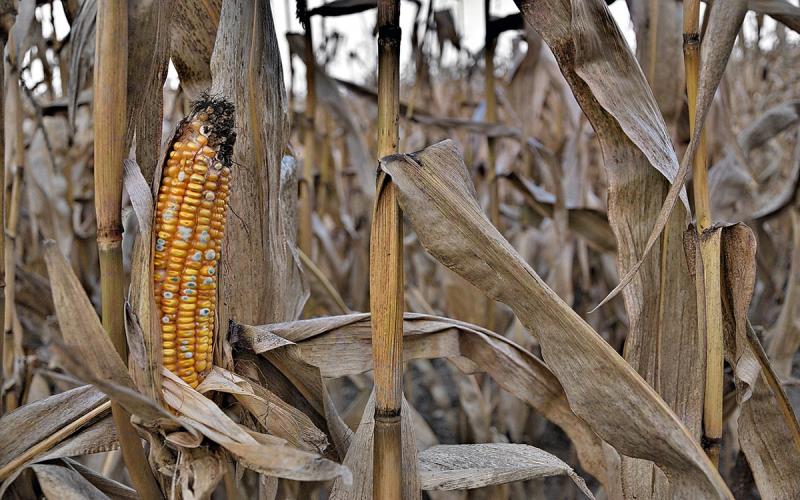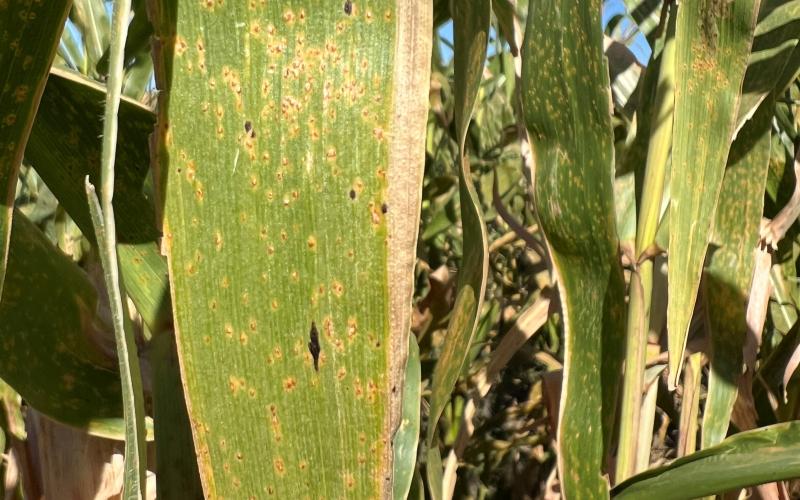Written collaboratively by Ciera Kotaska and Madalyn Shires.
Recent Tar Sport Cases
Tar spot was recently found in Turner, Clay, Union, Yankton, and Bon Homme Counties on September 8, 20024. Multiple lesions were found, but the severity was low, so no management was recommended (Figure 1 and Figure 2). The lesions were found mid-canopy, indicating that it was likely windblown from other areas. Many other fields were inspected but remain unaffected. Lesions may be found anywhere on the plant and will typically appear to be black and diamond-shaped. Lesions cannot be rubbed off the plant like insect frass can be, which is commonly confused as tar spot. Black lesions may also be surrounded by a yellow halo (Figure 3).
Single Lesion
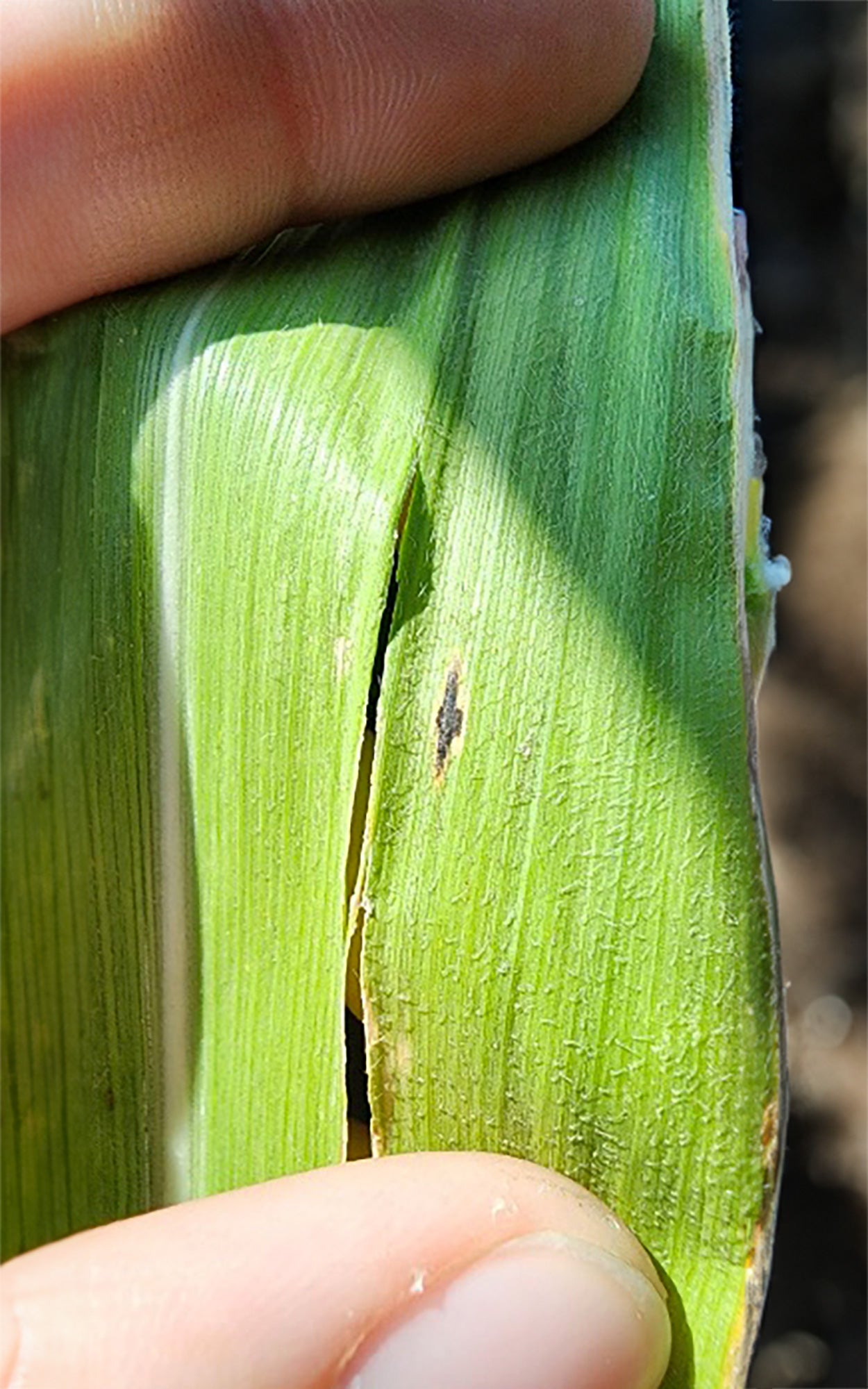
Multiple Lesions
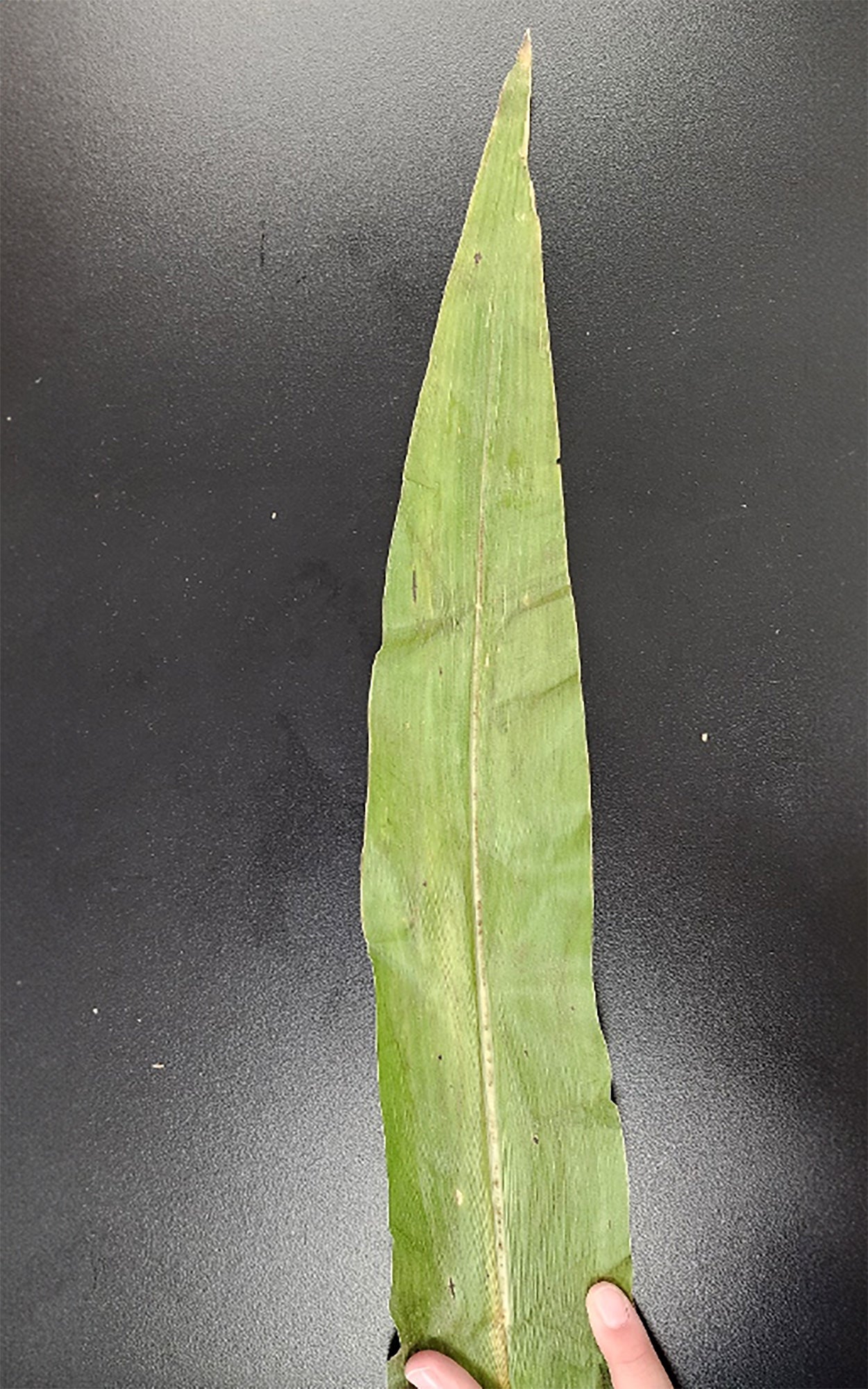
Severe Infection
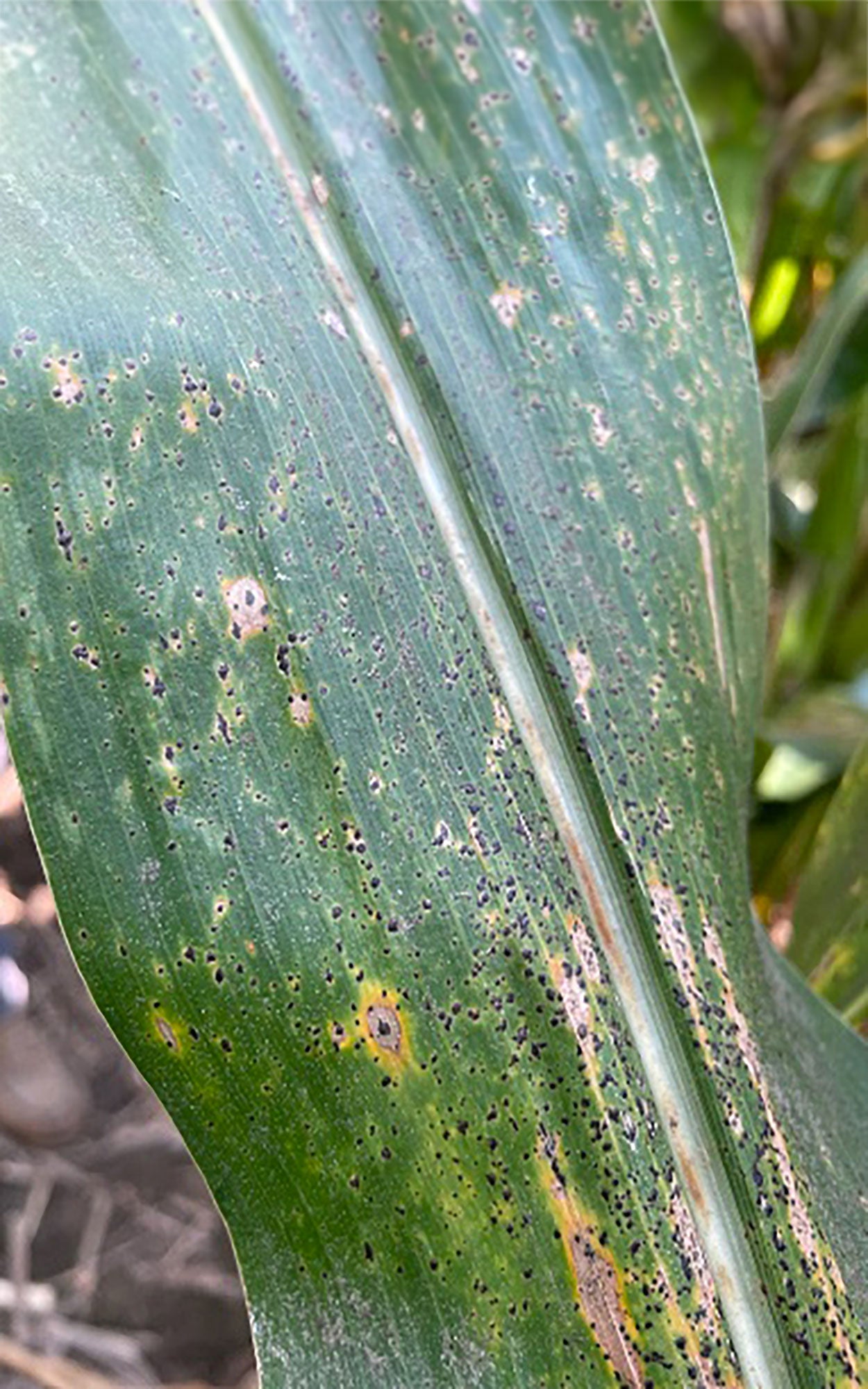
Scouting and Management
Low levels of tar spot do not indicate a need to spray, but they do indicate that fields should be routinely scouted until harvest. If tar spot is found in the field, it may overwinter in the corn residue. Previously, tar spot was found in six counties: Union (2022, 2023), Clay (2022, 2023), Yankton (2022, 2023), Lincoln (2022), McCook (2022), and Turner (2022). As many previously infected fields in a corn-soybean rotation are back to corn this year, it is important to check fields in these counties and surrounding areas.
If you suspect that you have found tar spot, please reach out to Madalyn Shires, Extension Plant Pathology Specialist.

